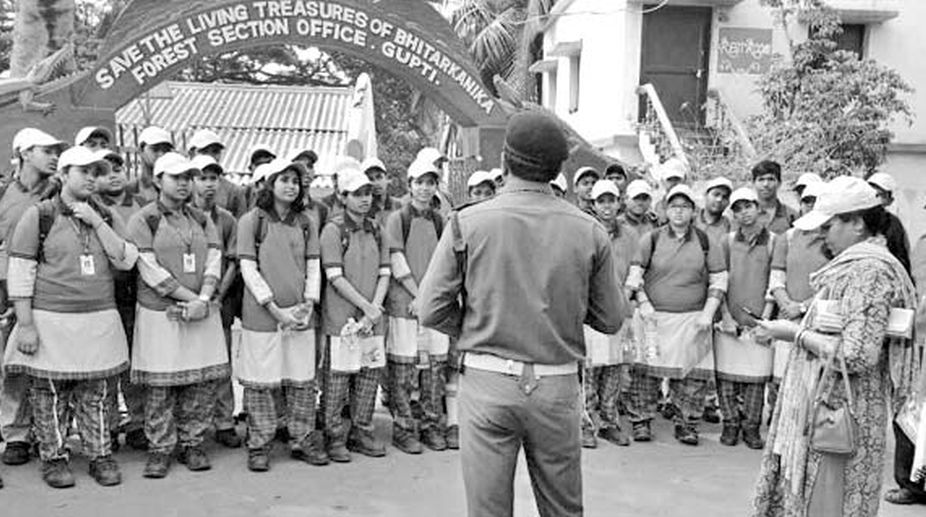In an exposure trip to mangrove forest cover, school students were imparted lessons on forest conservation, fragile ecosystem and issues like outbreak of man-animal conflict and global warming.
The awareness programme held at Bhitarkanika wildlife sanctuary was attended by students from various schools. The participants evinced keen interest and put questions on a variety of topics ranging from wildlife and environment, said forest officials.
Advertisement
The students from Paradip port town were taught on the significance of nature, wildlife and environment. They were also taken for a field visit to different wetlands spots in the national park.
The students asked us questions on various issues to clear their doubts, said Rajnagar Forest Range Officer, Amaresh Nath Pradhan. “The trip was absorbing and exciting. We enjoyed the natural beauty of the Bhitarkanika national park. It was fascinating to watch the rich reserve of mangrove forest ensconced along the water bodies. We could get the first hand knowledge of nature and its significance for survival of mankind. The exposure trip created awareness among all the 75 students who took part in it”, said a student Madhusmita Rout.
Bhitarakanika continues to be one of the best natural abode for estuarine crocodiles, wild boar, jungle cat, fishing cat, hyena, sambar, striped palm squirrel, gangetic dolphin, olive Ridley sea turtle, crocodile, lizard, water monitors, python, and king cobra. Around 166 species of birds have been spotted in the park.
Researchers have come across 11 of the 70 mangrove species, which were at elevated threat of extinction in the world, in Bhitarkanika. Though its 145 square km stretch ecosystem continue to bear the onslaught of man-made interference the much acclaimed site still possesses a rich reservoir of natural vegetation, flora and fauna and luxuriant bio-diversities, said officials in charge of the park.











